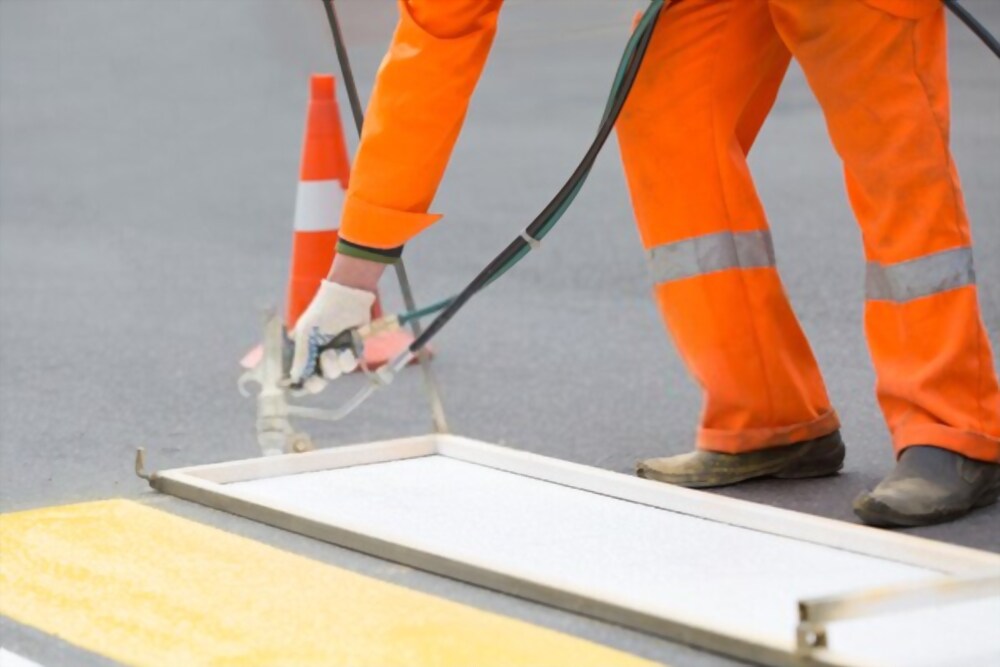There are a few specific types of paints used on the roads to make the markings. It needs to be clean and patch-free even after hundreds and thousands of vehicles run over it. Therefore, choosing the right type of paint for road marking is very important.
Road marking is also called line marking or pavement marking. Different materials and paints are used depending on the type of surface to be painted. The choice of the line-marking paint will also depend on the type of mark to be made.

The line marking paint and materials all have different properties. These properties must be taken into consideration while choosing the particular type of line marking paint. These properties are:
- Anti-skid
- Longevity
- Reflectivity and
- Performance.
Based on the specific requirements, there can be different types of paints and materials used to make the marks on the road. These are:
- Thermoplastic
- Methyl Methacrylate
- Water-based paint and
- Epoxy resin.
Thermoplastic road marking paint is the most common and a favored material for road marking. This is because these are highly reflective and hard-wearing. Water-based paint is low-profile but has anti-slip property. MMA or Methyl Methacrylate is a cold plastic paint used for road marking as well.
Thermoplastic road marking paint
Thermoplastic road marking paint is also called hot melt marking paint. This is because it is heated to 180 to 200 degrees Fahrenheit before application. This is a type of powder paint that is melt using a hot melt kettle. The molten line marking paint is then sprayed on the surface using an applicator while maintaining the desired temperature continuously. After it cools down, it becomes a hard polymer mark. This specific paint is:
- Thick
- Wear-resisting
- Reflective and
- Bright.
To improve the anti-skid property of this specific line marking paint and prevent wheel slip and accidents on snowy and rainy conditions, reflective glass beads are added to the thermoplastic. It can come in different colors and is an ideal line marking paint for pedestrian walkways, car parks, walkways, and many more areas.
The thermoplastic paint dries up fast, in fact in minutes, and comes with different components such as:
- Synthetic resin
- Pigments
- Glass beads
- Packing materials
- Additives and more.
This specific line marking paint involves a mechanical process simply due to the fact that the temperature of the paint needs to be maintained. These machines help in making lines on the road for a long distance. The quality of the line however depends on the quality of the molten paint.

Waterborne road marking paint
Waterborne road marking paint is more commonly used in the United States. This specific line marking paint comes with an excellent cost-performance ratio. It is also used in almost all European countries but there are few countries that strictly do not use this paint.
The most significant advantage of waterborne line marking paint is that it is environment friendly. It is due to the binders of the waterborne paints that make it so useful for making marks on the roads. The other advantages of waterborne paint are:
- Lack of inflammable and hazardous ingredients
- Lower transportation cost
- Lower storage costs and more.
There is, however, one significant advantage of the waterborne paint. The paint is required to be protected from extreme temperatures and frost. Therefore, at the time of application, both the advantages and disadvantages of the waterborne paint need to be considered depending on the type of surface and the climatic condition of the region.
To sum up, irrespective of the type of line marking paint chosen, it is required to make sure that it is highly durable and reflective. It is only then the usefulness of it will be rightly accomplished.



